Mahjong
Mahjong, originated in China, is commonly known as Sparrow in Guangdong, Hong Kong and Macao. It is a game invented by the ancients of China, entertainment equipment, usually made of bamboo, bone or plastic, with small rectangular blocks engraved with patterns or characters. There are 136 mahjong pieces in the north and eight more mahjong cards in the south. They are spring, summer, autumn and winter, plum, bamboo, orchid and chrysanthemum, totally. 144.
The four man dominoes show is popular in the Chinese culture circle.
In the late Ming Dynasty and early Qing Dynasty, horse dangling cards also derived a kind of entertainment equipment called "card". There were 60 cards. When playing cards, four people take ten pieces first, then pick up cards and play cards in turn. One family played cards, and two or three told them to win the card first. These cards and playing are very much like mahjong today. This kind of card game is silent in the process of playing, so it is also called silent peace card.
In April 2017, the International Federation of intellectual sports announced that mahjong became the world's intellectual sport.
Mahjong is a game invented by the ancients of China. It is a recreational device of brand type. It is made of bamboo, bone or plastic with small rectangular blocks engraved with patterns or characters. Each set of 136 (74 in some areas) has eight more Southern Mahjong cards. They are spring, summer, autumn and winter, plum, bamboo, orchid and chrysanthemum, totaling 144 cards. The rules of the game are slightly different in different regions. Mahjong's cards mainly include "cake (Wen Qian)", "bar", "Wan (Wan Guan)" and so on. In ancient times, mahjong was mostly made of bamboo back with bone surface. It can be said that mahjong is actually a combination of cards and dominoes. Compared with other domino forms, mahjong is the most complex and interesting game. Its basic playing method is simple and easy to use, but there are many changes in it. Its combination varies from person to person, so it has become one of the most attractive forms of games in Chinese history.
Mahjong not only has its unique game characteristics, but also intellectuality, interesting and game in one. It has rich charm, rich connotation and long-lasting Oriental cultural characteristics, so it has become an important part of the treasure house of traditional Chinese culture.
Mahjong is very popular in China's vast urban and rural areas. Its popularity covers all social strata and fields. It has entered thousands of families and become the most influential intellectual sports activity in China. The objective existence of mahjong sports is a reality that no one in China can avoid today.
As a traditional Chinese cultural phenomenon, mahjong sports do exhibit diversified forms. Because of this, some people believe that mahjong is an important part of Chinese traditional culture, its unique value can be called the treasure of the country; others abhor it, think that mahjong is the first gambling, its evil degree is almost the same as drug abuse.
Mahjong is not necessarily related to gambling. After the founding of New China, gambling disappeared, but mahjong has been healthy in people's amateur cultural life for many years. Today, when someone uses mahjong as a gambling device, the blame is not on mahjong. Orange was born in Huainan and was planted in Huaibei. Human effort is the decisive factor.
Because mahjong is very interesting, entertaining and intellectualized, it is very popular and influential. In the early 20s, mahjong was not only popular in Asia, but also popular in Europe and America. At that time, mahjong tiles exported and Arabia's numbers and English letters often appeared on the cards. There are many books about mahjong playing abroad and magazines studying mahjong playing abroad. Japan and other countries also have groups specializing in mahjong and regularly hold national mahjong competitions. In Europe and the United States, Mahjong is regarded as an antique that reflects the Oriental interest. There are many people who treasure Mahjong in exquisite carved boxes. With the development of modern science, the tentacles of electronic computers have extended to every field of life. Some people have developed "mahjong software", people sit in front of the computer, press the keyboard, you can fight with the computer "sparrow war", it is endless fun.
In China, mahjong cards were once neglected in a period of time. But now it has become a recreational activity for many people. Veteran comrades who retire from retirement have a few laps in their leisure time. In the family, family reunion and several rounds of mahjong are also full of festival cheer. Mahjong has become a popular and healthy entertainment activity.
The basic pattern of mahjong originated from the "horse Crane" in the Ming Dynasty. Gu Yanwu's Rizhilu said: "At the end of the Wanli calendar, there was no peace, and the scholar-bureaucrats did not use their hearts. From gamblers to the apocalypse, horse-hanging began." Li Yesi, a contemporary literati in Ningbo, has "horse crane theory" to support the above view. It is worth noting that there are three kinds of patterns of Ma-hang card, namely "Wan Zi", "Cao Zi" and "Wen Qian". They are basically the same as those of Mahjong, but they play differently.
The early information we can find about Mahjong is mainly found in Xu Ke's Barnyard Bill: "Sparrow, the voice of the horse's hanger turns too. Wu people call birds like Diao, to read. In addition, there is a historical material about the spread of Mahjong, Du Yaquan's "Boshi" said, "Legend has it that Mahjong cards were first popular in Fujian and Guangdong coastal areas and among ships. In the early Qing Dynasty, Mahjong cards were extended from Jiangxia in Ningbo to Tianjin and Shanghai commercial ports." That is to say, mahjong was passed through Ningbo in the late Qing Dynasty and then extended to the whole country.
The role of Ningbo in Mahjong formation is not only propagation but also creation. Around Xianfeng in Qing Dynasty, there was a man in Ningbo who lived in Jiangci Lane in the city, Chen Zhengke and Ziyumen. He was very close to Xia Fuli, the British consul in Ningbo. He simply moved to the residence of foreigners in Jiangbei and taught British diplomats how to play mahjong. We have found the basis for this matter in the Memoirs of the English heirs. Today, Chen's descendants and grandchildren say directly that "Mahjong was invented by my predecessors", while the residents of Jiang Cixiang's old residence still know that "Mahjong was invented by Lao Ye (Chen Yumen). Mahjong is the pronunciation of "sparrow" in Ningbo dialect, because Chen Yumen created a pair of "sparrows" in playing domino mahjong. Today, the Japanese still write Mahjong as "Sparrow" and read it as "Mahjong", but the real sparrow reads another sound in Japanese, and all mahjong terms in Japanese also use the pronunciation of Ningbo dialect. At the same time, Chen Yu door also created a new method of "bar", "eat" and "dice" positioning.
In a word, Mahjong is a new domino game mode created by Ningbo into Chen Yumen according to the basic pattern of Ma Diang and the basic form of Pai Nine. It spreads from Ningbo to all parts of the country, and the time created is about between Tongzhi and Guangxu in Qing Dynasty. Mahjong is the faint sound of sparrows in Ningbo dialect. Strictly speaking, mahjong should be written as "sparrow".
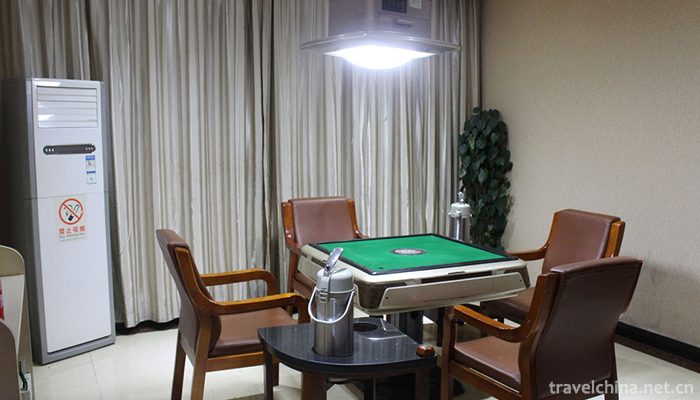
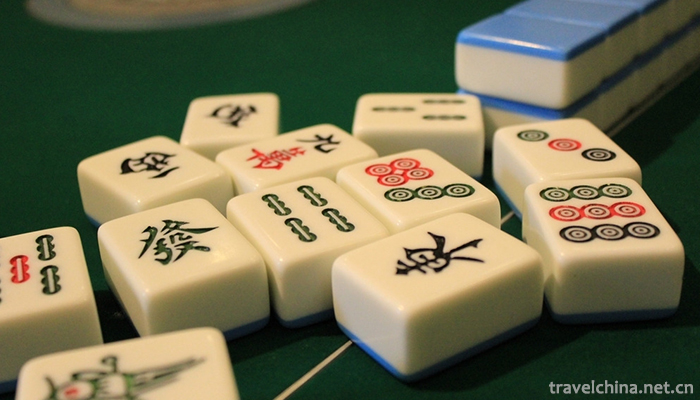

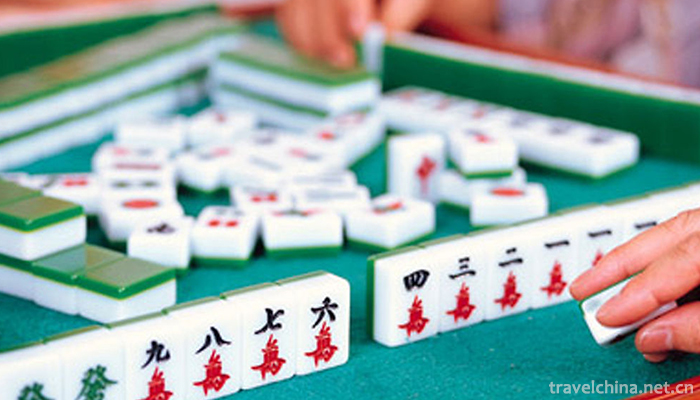

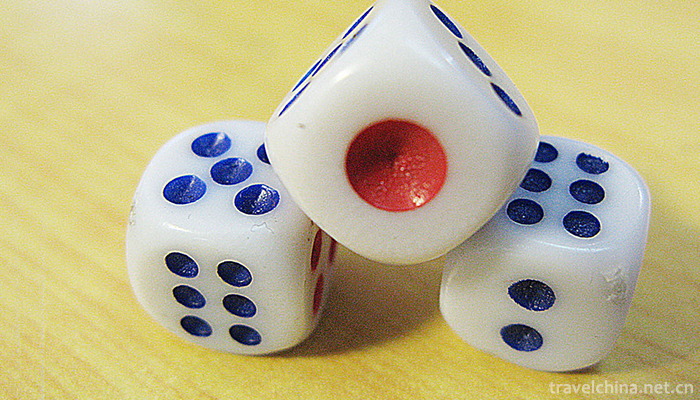

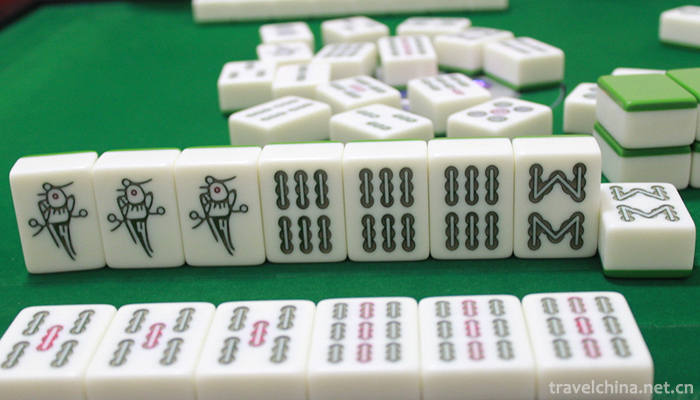
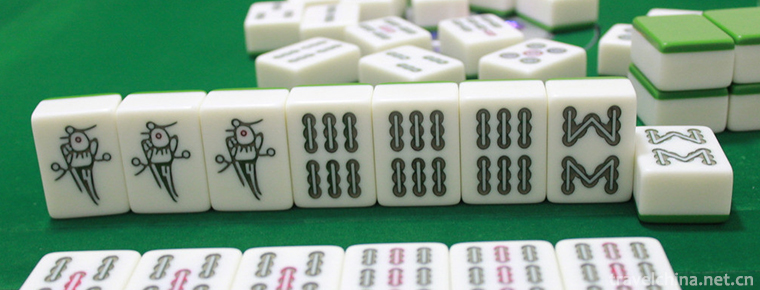
-
1.Black bean steamed pork ribs
Steamed pork ribs with lobster sauce is a traditional dish with color, aroma and taste. It belongs to Guangdong cuisine department. Cut the chopped pork ribs and add the marinade
Time 2018-11-02 -
2.Longmen Grottoes Scenic Area
Longmen Grottoes is one of the treasure houses of Chinese stone carving art. It is now a world cultural heritage, a national key cultural relics protection unit and a national AAAAA class tourist attr
Time 2018-12-09 -
3.Tianshan Tianchi Scenic Area
Tianchi Mountain: World Natural Heritage, National AAAAA Class Tourist Scenic Spot, National Geopark, National Key Scenic Spot, National Civilized Scenic Spot, International and Natural Biosphere Rese
Time 2018-12-12 -
4.Traditional flower arrangement
Chinese traditional flower arrangement art has a long history, extensive and profound, is the representative of Oriental flower arrangement art. It has the characteristics of dignified and elegant mod
Time 2019-04-19 -
5.Drum bowl song
Drum-pot song is a very ancient traditional form of music and art in Hubei Province of China. It originates from the traditional folk activities of "beating a pot as a drum, singing with the fune
Time 2019-05-01 -
6.Kazakh Karakol Leha
On May 23, 2011, Kazakh Karakol Kazakh was listed in the third batch of national intangible cultural heritage list with the approval of the State Council.
Time 2019-05-02 -
7.memorial ceremony for Confucius
The sacrifice to Confucius is a grand sacrifice ceremony held mainly in Confucian temples for the sake of revering and remembering Confucius, which is a miracle in the history of world sacrifice and h
Time 2019-05-05 -
8.Lu an drum
Luan drum is a traditional drum book and drum music form with distinct regional characteristics in the north, also known as the "old tune of Lu'an". It is named for its popularity in the are
Time 2019-05-15 -
9.Bronze drum dance
Tonggu dance is one of the most popular and influential ancient dances among the Zhuang and Yi people in Wenshan Zhuang and Miao Autonomous Prefecture of Yunnan Province. It is distributed in Zhuang a
Time 2019-06-21 -
10.Long Drum Dance of Yao Nationality
Chinese Yao folk dance. Popular in Guangdong, Guangxi, Hunan and other provinces where Yao people live together, most of them perform on traditional Yao festivals, harvest celebrations, relocation or
Time 2019-07-11 -
11.Zuoquan Xiaohua Opera
Zuoquan Xiaohua Opera is a kind of Han folk song and dance drama which originated in Zuoquan County of Shanxi Province and spread in Yushe and Heshun areas near Zuoquan County. Its style is: one step
Time 2019-08-16 -
12.Chengdu University of TCM
Chengdu University of Traditional Chinese Medicine, formerly known as Chengdu College of Traditional Chinese Medicine, was founded in 1956. It was one of the earliest four Chinese medical colleges and
Time 2019-08-31